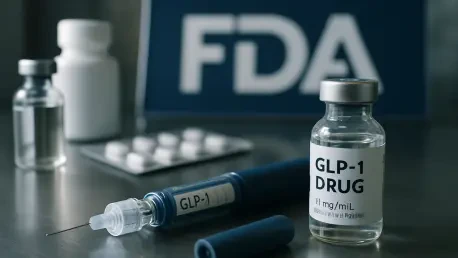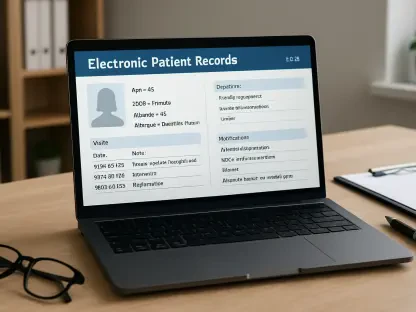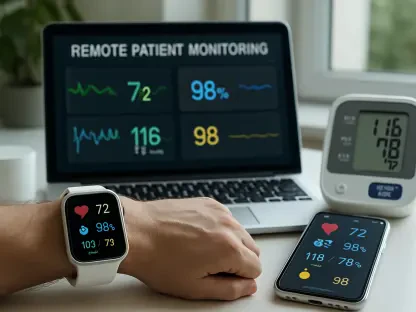In a striking move that has sent ripples through the healthcare industry, the U.S. Food and Drug Administration (FDA) has initiated a sweeping crackdown on the compounding and marketing of GLP-1 drugs such as semaglutide and tirzepatide, widely recognized for their use in weight loss management. This regulatory action targets over 100 telehealth companies, compounding pharmacies, medical spas, and concierge practices accused of making misleading claims about these medications. With skyrocketing demand for branded versions like Wegovy and Mounjaro leading to persistent shortages, compounded alternatives have surged in popularity, filling gaps in access but also raising alarming concerns about patient safety and deceptive advertising practices. The FDA’s response, which includes issuing over 50 warning letters and partnering with the Department of Health and Human Services (HHS), underscores a critical shift in oversight aimed at curbing misinformation. This development highlights the urgent need to balance innovation in healthcare delivery with the imperative to protect consumers from unverified promises in a rapidly evolving digital health landscape.
Regulatory Actions and Market Dynamics
The FDA’s Enforcement Surge
The FDA’s recent enforcement efforts represent a significant escalation in regulatory oversight, focusing sharply on misleading claims surrounding compounded GLP-1 drugs. Over 50 warning letters have been dispatched to telehealth providers and compounding entities, signaling a zero-tolerance stance on advertising that falsely suggests these medications are FDA-approved or equivalent to branded counterparts. Collaboration with HHS further amplifies this initiative, aiming to root out deceptive practices that jeopardize public health. The agency’s actions are a direct response to a market overwhelmed by demand for weight-loss solutions, where shortages of approved drugs have created fertile ground for unverified alternatives. This crackdown is not merely punitive but serves as a clarion call for stricter adherence to regulatory standards, ensuring that marketing aligns with scientific evidence and prioritizes consumer safety above commercial gain in a sector prone to rapid, unchecked expansion.
Beyond the immediate issuance of warnings, the FDA’s strategy involves a broader examination of how digital platforms amplify misinformation about compounded GLP-1 medications. Many providers have leveraged online advertising to reach vast audiences, often glossing over the lack of rigorous testing for these drugs compared to their branded equivalents. High-profile instances, such as a Super Bowl advertisement by a telehealth company that downplayed risks, exemplify the scale of the problem. The agency’s focus extends to ensuring that claims about safety and efficacy are substantiated, pushing for transparency in a market where patient trust hangs in the balance. This regulatory surge also signals potential future actions, as the FDA appears poised to sustain its scrutiny over digital health marketing, urging all stakeholders to reevaluate their practices and align with evolving guidelines to avoid further sanctions or legal repercussions.
Shortages Driving Compounding Boom
The scarcity of FDA-approved GLP-1 drugs like Wegovy and Mounjaro has been a key driver behind the explosive growth of compounded alternatives, reshaping market dynamics in profound ways. With demand for these weight-loss medications outstripping supply, patients and providers have turned to compounding pharmacies to create customized formulations, often marketed as viable substitutes. This boom, while addressing immediate access issues, operates in a regulatory gray area since compounded drugs bypass the stringent safety and efficacy reviews required for branded products. The result is a marketplace teeming with options that vary widely in quality and reliability, raising questions about long-term patient outcomes. As shortages persist, the tension between meeting urgent medical needs and ensuring standardized care continues to challenge regulators and healthcare providers alike, highlighting a critical gap in oversight.
This surge in compounding also reflects deeper systemic issues within the pharmaceutical supply chain, where production bottlenecks and high costs limit access to approved medications. Compounding pharmacies, positioned as a stopgap solution, have capitalized on this void, often partnering with telehealth platforms to scale their reach through aggressive digital campaigns. However, the lack of uniform standards in preparation and sourcing for these drugs introduces significant variability, with some formulations potentially falling short of therapeutic expectations or posing unforeseen risks. The FDA’s crackdown seeks to address this unchecked proliferation, emphasizing that mass-market promotion of compounded drugs during shortages blurs the line between personalized care and commercial exploitation. As the market evolves, striking a balance between innovation and accountability remains a pressing concern for all involved parties.
Patient Safety and Ethical Concerns
Risks of Compounded Medications
Compounded GLP-1 drugs, while filling a critical gap in access, carry inherent risks that have become a focal point of the FDA’s regulatory actions due to their lack of standardized testing. Unlike FDA-approved medications, these formulations are not subject to rigorous clinical trials or quality control measures, leading to potential inconsistencies in potency, purity, and safety. Patients using these drugs may face heightened risks of adverse effects, ranging from gastrointestinal distress to more severe conditions like pancreatitis, without the assurance of consistent therapeutic benefits. The variability in sourcing ingredients and manufacturing processes further compounds these dangers, making it difficult to predict outcomes. Clear communication of these uncertainties to patients is essential to prevent harm and ensure that individuals make informed decisions about their treatment options in a landscape fraught with unverified claims.
Moreover, the absence of federal oversight for compounded medications means that accountability often falls short, leaving patients vulnerable to substandard products. Reports of adverse reactions linked to poorly prepared formulations underscore the urgency of addressing these safety gaps, especially as demand for GLP-1 drugs continues to soar. Healthcare providers must navigate this complex terrain by prioritizing transparency, ensuring that patients understand the distinction between approved drugs and compounded alternatives. The FDA’s crackdown serves as a reminder that marketing must not overshadow medical responsibility, pushing for stricter guidelines on how these drugs are presented to the public. As regulators tighten their grip, the emphasis on patient safety becomes a non-negotiable standard, urging all stakeholders to rethink how compounded medications are integrated into treatment plans without compromising well-being.
Clinician Responsibilities and Ethics
Healthcare providers bear a significant ethical burden in the wake of the FDA’s crackdown on compounded GLP-1 drugs, with informed consent emerging as a cornerstone of responsible practice. Clinicians are tasked with ensuring that patients fully grasp the risks and limitations of these medications, particularly the fact that they lack the safety guarantees of FDA-approved options. This involves detailed discussions about potential side effects and the uncertainty surrounding compounded formulations, documented through robust consent processes. Failure to provide such clarity not only undermines trust but also exposes practitioners to legal risks, including malpractice claims. In telehealth settings, where physical assessments may be limited, the need for thorough communication becomes even more critical to safeguard patient interests and uphold professional integrity amidst growing regulatory scrutiny.
Additionally, clinicians must align their practices with ethical standards to avoid the pitfalls of misleading marketing or inadequate risk disclosure, which could lead to disciplinary actions or reputational harm. The FDA’s actions highlight the importance of transparency, urging providers to refrain from equating compounded drugs with their branded counterparts in promotional materials or patient interactions. Staying abreast of evolving guidelines and enforcement trends is equally vital, as non-compliance could have far-reaching consequences. By prioritizing patient education and adhering to professional codes of conduct, healthcare providers can mitigate risks and maintain credibility. This ethical framework not only protects patients but also reinforces the integrity of the medical field, ensuring that innovation does not come at the expense of accountability in an era of heightened federal oversight.
Telehealth’s Role and Challenges
Innovation vs. Oversight in Telehealth
Telehealth has revolutionized access to weight-loss treatments, breaking down geographic and logistical barriers for countless patients grappling with obesity, yet it also stands at the epicenter of the FDA’s regulatory crackdown on compounded GLP-1 drugs. The ability of digital platforms to connect individuals with care providers instantly has been a game-changer, particularly during shortages of branded medications like Wegovy. However, this same scalability and broad reach have made telehealth a hotspot for aggressive marketing tactics that often overpromise results or downplay risks associated with compounded alternatives. The tension between fostering innovation and ensuring adequate oversight is palpable, as regulators grapple with how to support expanded access without allowing unchecked growth to compromise patient safety. This dual role underscores the complex challenges facing the sector as it navigates an evolving landscape of opportunity and accountability.
Furthermore, the rapid expansion of telehealth services has outpaced the development of robust regulatory frameworks, creating vulnerabilities that the FDA seeks to address through its current enforcement actions. Many telehealth companies have leveraged online advertising to promote compounded GLP-1 drugs, often without sufficient disclaimers about their unapproved status or potential hazards. This has led to widespread misinformation, eroding trust among patients who may not fully understand the distinctions between treatment options. The agency’s focus on curbing deceptive practices signals a push for stricter controls, challenging telehealth providers to refine their approaches. Balancing the benefits of digital health innovation with the need for rigorous oversight remains a critical issue, as the sector must adapt to heightened scrutiny while continuing to serve as a vital lifeline for those in need of accessible care.
Navigating Regulatory Expectations
For telehealth providers, aligning with the FDA’s evolving guidelines is not just a matter of compliance but a fundamental step toward sustaining patient trust in a highly scrutinized environment. This involves revisiting marketing strategies to ensure that all claims about compounded GLP-1 drugs are accurate and accompanied by clear disclaimers regarding their regulatory status and associated risks. Providers must also prioritize patient education, offering detailed explanations that distinguish between FDA-approved medications and compounded alternatives. Staying informed about enforcement trends and regulatory updates is crucial, as the current crackdown may herald further actions aimed at tightening digital health marketing standards. By proactively addressing these expectations, telehealth entities can mitigate the risk of penalties and position themselves as credible partners in healthcare delivery, even under intense federal oversight.
Equally important is the need for telehealth platforms to establish robust internal protocols that reinforce ethical practices and safeguard patient interests amidst the compounding controversy. This includes implementing systems for ongoing monitoring of patient outcomes, especially when prescribing compounded GLP-1 drugs, to detect and address adverse effects promptly. Training staff to handle informed consent discussions effectively, particularly in virtual settings, can further enhance accountability. The FDA’s actions serve as a catalyst for such improvements, pushing providers to elevate their standards beyond mere regulatory compliance. As the digital health landscape continues to mature, adapting to these expectations will be essential for telehealth companies to maintain legitimacy and foster long-term confidence among patients and regulators alike, ensuring that innovation aligns with responsibility.
Looking Ahead: Building a Safer Future
Reflecting on the FDA’s decisive crackdown on compounded GLP-1 drugs, it becomes evident that this regulatory push marks a turning point for telehealth and compounding practices. The issuance of warning letters and partnerships with federal agencies like HHS underscore a firm commitment to tackling misleading marketing and protecting public health. As the dust settles, the emphasis on patient safety and ethical accountability reshapes how providers approach digital health services. Looking forward, stakeholders must focus on actionable steps, such as integrating stricter compliance measures and enhancing patient education initiatives to prevent misinformation. Collaboration between regulators, clinicians, and telehealth platforms will be key to developing standardized guidelines for compounded medications. By prioritizing transparency and staying ahead of regulatory trends, the industry can build a safer, more trustworthy future, ensuring that innovation in healthcare delivery does not compromise the well-being of those it aims to serve.









